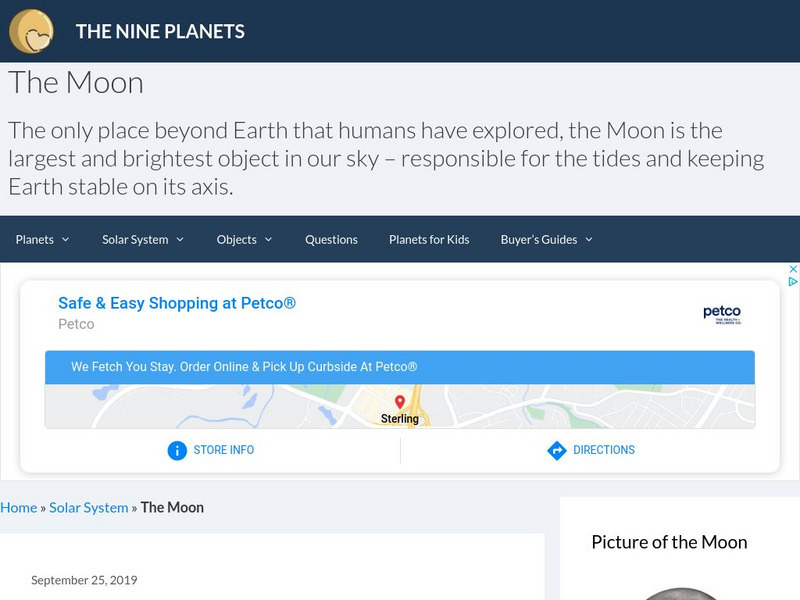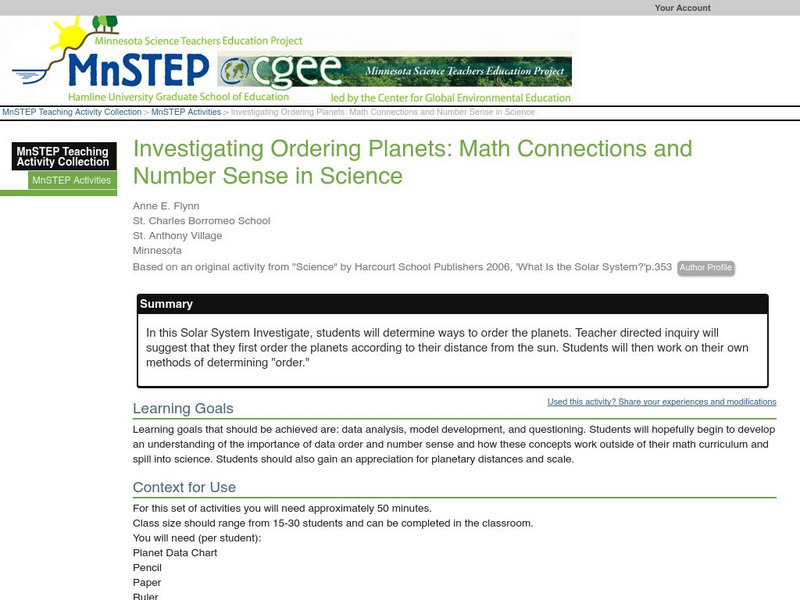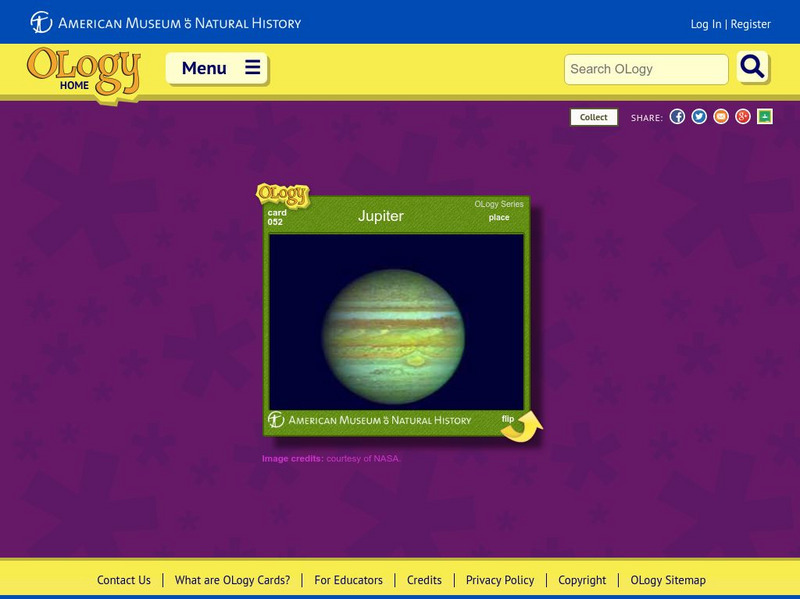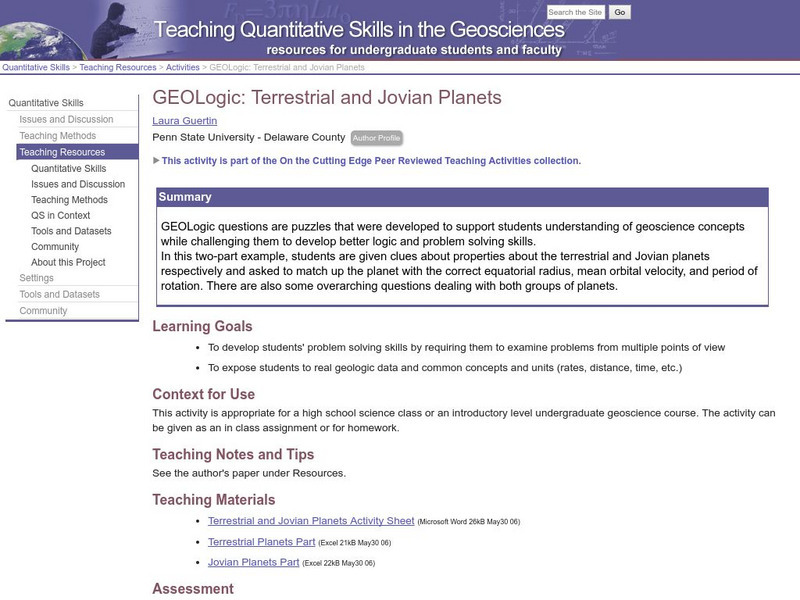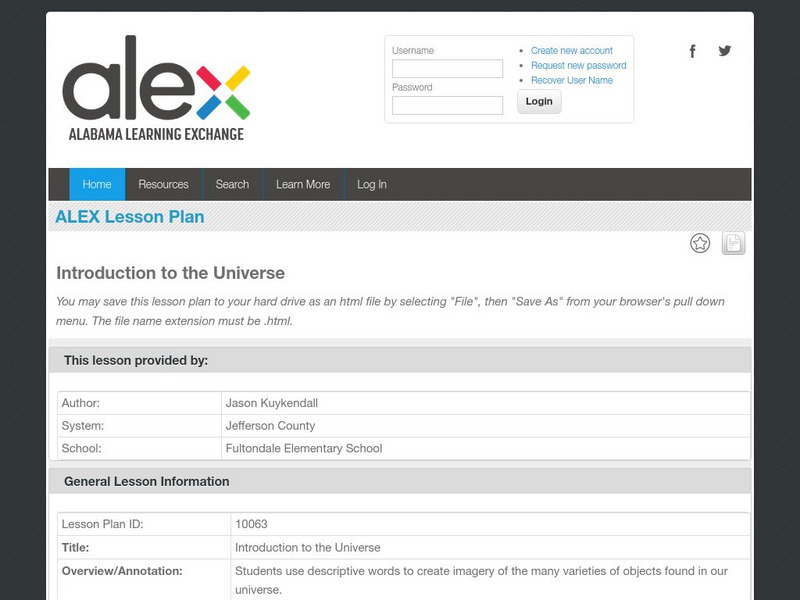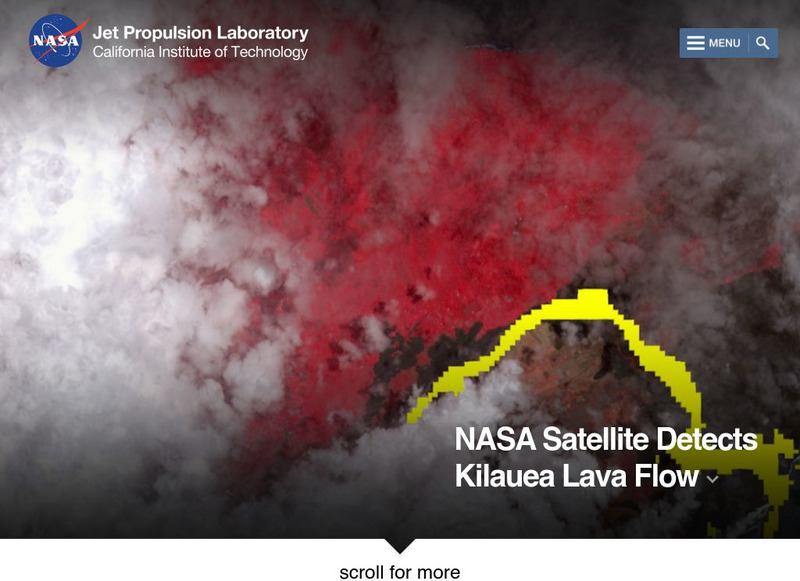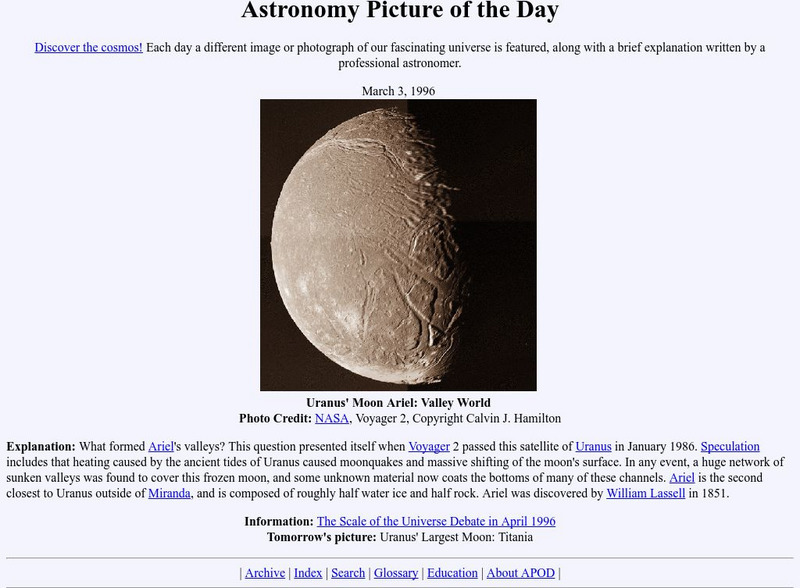Hi, what do you want to do?
Nine Planets
The Nine Planets: The Moon
Explore the mythology, structure, observational history, gravitational force, and orbit of Earth's Moon.
DOGO Media
Dogo News: Nasa Confirms Presence of Liquid Water on Mars
Read about the fascinating discovery of liquid water on Mars. Includes video.
NASA
Nasa: Image Science Center: Ask the Space Scientist
A NASA scientist, Dr. Sten Odenwald, answers many students' questions. Topics include planets, galaxies, black holes, the origin of the universe, and common misconceptions about space.
Other
The Astronomy Cafe
NASA scientist Sten Odenwald calls this his "web site for the astronomically disadvantaged." Do you have lots of questions about space that you can't seem to get answers to? Would you like to learn about a career in astronomy, Big Bang...
TeachEngineering
Teach Engineering: An Inflated Impression of Mars
The purpose of this activity is to use scaling in order to give students an idea of the size of Mars in relation to the Earth and the Moon as well as the distance between them. The students will have to calculate dimensions of the scaled...
Science Education Resource Center at Carleton College
Serc: Investigating Ordering Planets: Math Connections & Number Sense in Science
In this Solar System Investigate, learners will determine ways to order the planets. Teacher directed inquiry will suggest that they first order the planets according to their distance from the sun. Students will then work on their own...
American Museum of Natural History
American Museum of Natural History: Saturn O Logy Card
Flip this interactive card to start learning about the planet Saturn. Answer multiple-choice and fact-or-fiction questions and review some fast facts about the second largest planet in our solar system.
American Museum of Natural History
American Museum of Natural History: Jupiter O Logy Card
Flip this interactive card to start learning about Jupiter, the largest planet in our solar system. Answer multiple-choice and fact-or-fiction questions and review some fast facts about Jupiter.
TeachEngineering
Teach Engineering: The Outer Planets
Students explore the outermost planets of our solar system: Saturn, Uranus and Neptune. They also learn about characteristics of Pluto and its interactions with Neptune. Students learn a little about the history of space travel as well...
ClassFlow
Class Flow: Solar System
[Free Registration/Login Required] This flipchart guides online research on a study of our solar system and links the teacher to a WebQuest activity.
Science Education Resource Center at Carleton College
Serc: Geo Logic: Terrestrial and Jovian Planets
Through GEOLogic puzzles, students are given clues about properties about the terrestrial and Jovian planets respectively, and challenged to match the planet with the correct equatorial radius, mean orbital velocity, and period of rotation.
NASA
Nasa: Planets in a Bottle
In this simple lesson, students grow yeast to learn how the climates on each of the nine planets would affect life.
Nine Planets
The Nine Planets: Uranus
An excellent report on the planet Uranus. The site includes detailed information about the planet as well as links to information about Uranus moons, unmanned probes sent to explore Uranus, and an extensive set of images of the planet.
University of Texas at Austin
The University of Texas Mc Donald Observatory: Mars
Discover interesting facts about Mars, the furthest planet from the sun.
University of Texas at Austin
The University of Texas Mc Donald Observatory: Venus
Discover interesting facts about Venus, the hottest planet and the second planet from the Sun.
University of Texas at Austin
The University of Texas Mc Donald Observatory: Mercury
Discover interesting facts about the tiny planet Mercury, the closest planet to the Sun.
University of Texas at Austin
The University of Texas Mc Donald Observatory: Earth
Learn interesting information about the Earth, the largest of the "terrestrial" planets.
University of Texas at Austin
The University of Texas Mc Donald Observatory: Pluto
Discover interesting information about Pluto, a member of the Kuiper Belt and no longer a planet since 2006.
Alabama Learning Exchange
Alex: Introduction to the Universe
Students use descriptive words to create imagery of the many varieties of objects found in our universe.
NASA
Nasa: Jet Propulsion Laboratory
NASA's Jet Propulsion Laboratory at the California Institute of Technology is "the lead US center for robotic exploration of the solar system."
Natural History Museum
Natural History Museum: Our Place in the Universe
Part of a larger online exhibit on the moon and space, this site deals with one's place in the universe. The topics covered include the sun and solar system, the galaxy, and the universe.
Other
Sandburg Center for Sky Awareness: What Are the Shapes of the Planets' Orbits?
In this lesson plan investigation students learn about the shapes of the planetary orbits by experimenting with ellipses of different proportions.
NASA
Nasa: Astronomy Picture of the Day: Uranus's Moon Oberon
Brief overview of Oberon, the most distant and second largest moon of Uranus. Includes its discovery and also a few pictures. A NASA picture of the day.
NASA
Nasa: Astronomy Picture of the Day: Uranus's Moon Ariel
Provides a brief overview of Ariel, one of Uranus's moons. Details how its deep valleys were formed. A NASA astronomy picture of the day.





